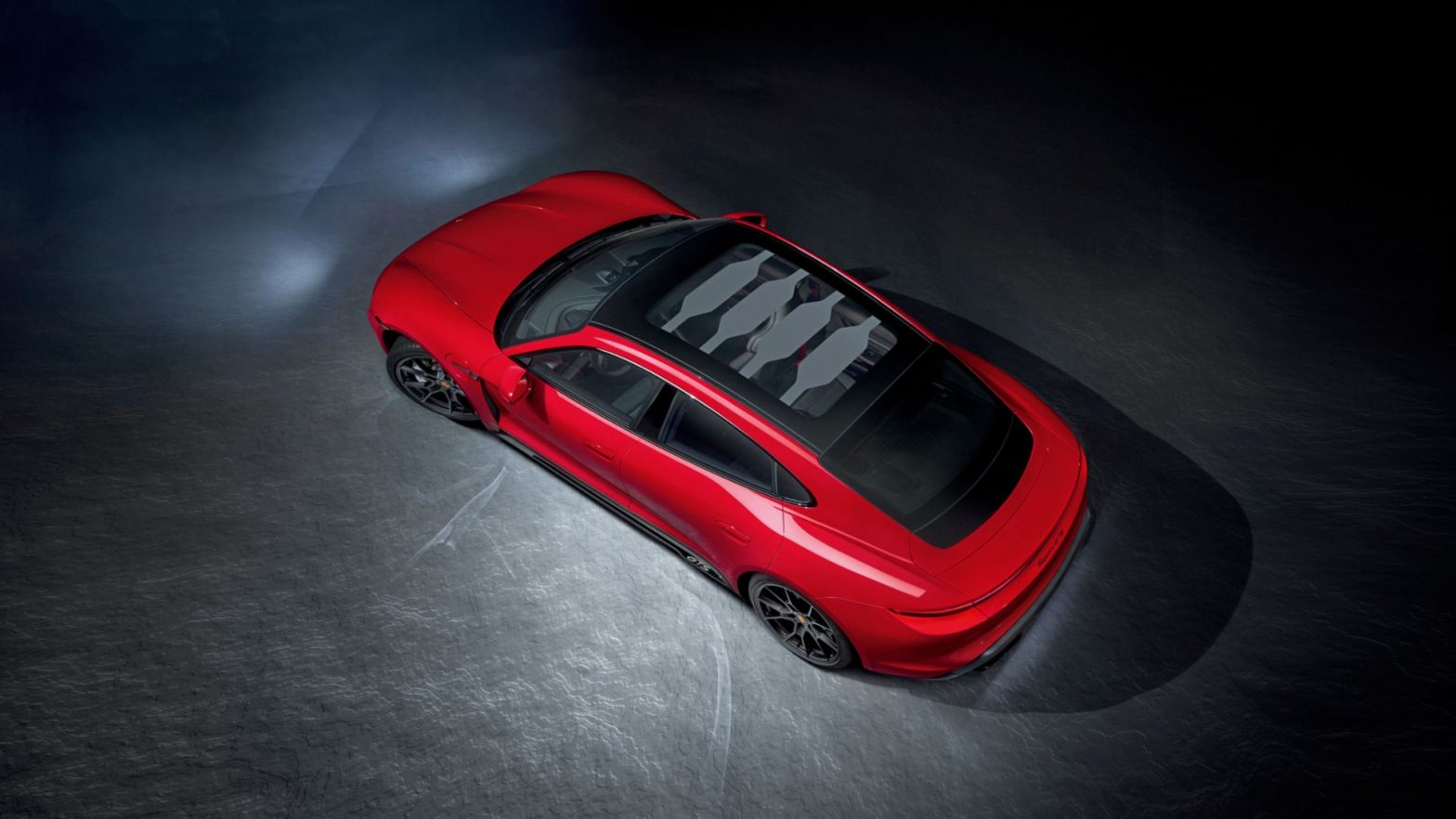Available for all model versions, the optional panoramic roof with Variable Light Control is matte white in its default state and without power, keeping the summer heat outside. But when the Taycan starts up, the roof comes to life again, activating the last setting selected via the memory function, and then awaits new commands. The touch panel allows you to set the roof to semitransparent in the Semi and Bold modes or to 100 percent transparent in Clear mode.
In addition, you can use the slider function to shield the light from front to back as if with a roller shade – with immediate effect: the perceived and actual temperature at head height drops significantly despite the sunshine. In the winter, the low-e coating on the underside eliminates the unpleasant layer of cold just below the glass surface much like a knit cap, demonstrating that this feature is capable of more than the name might suggest: versatile and more effective than a roller shade, with energy consumption below 20 watts.
Ten years of research for perfect function
These are the amazing results of an exciting development. “In architecture, layers of liquid crystals have long been used in windowpanes to manage temperature,” explains Stephan Wetzel, specialist in automotive glazing at Porsche. For a good ten years now, he’s been conducting research in this field and searching for and developing solutions to prepare smart technology for special demands in the automotive sector. The challenges: “Quick changes in light, many different climatic conditions, vibrations, and exposure to intense UV radiation.” But the impressive results are now here – and Porsche has assumed a pioneering role in the development of this smart option.

The panoramic roof with Variable Light Control not only eliminates the need for headroom-reducing sunshades, but also offers effective heat protection. With a high-precision test setup that simulates 45 minutes of heat comparable to that under the South African sun on a summer day, the headroom remains nine degrees Celsius cooler than with the best roller shade available. And in Clear mode, the Taycan glass roof allows much more light into the interior than all previous tinted panoramic roofs.
The secret: a layered design
The climatic wonder requires seven layers. The core features a polymer matrix with a wafer-thin conductive layer on both sides, referred to as indium tin oxide. If no voltage is present between these layers, the matrix is matte. If the alternating voltage is active, the liquid crystals rearrange themselves and provide a clear view. A safety film and layer of glass appear on each side of this innovative core. Thanks to a silver coating, the outer layer reflects the heat of the sun and the inner layer has an insulating effect. The conductive layers are divided into nine segments with lasered seams that are almost invisible.
The result is 40 percent matte in Semi mode and 60 percent matte in Bold mode. “We originally planned simple, straight stripes,” says Stephan Wetzel. “But it looked a little awkward. My colleague Markus Schulzki from Predevelopment worked with the Design department to develop a whole new look.” The shape of the third brake light served as inspiration for the unmistakable pattern. “And that was it! It was a huge hit.” And that’s how a suitable shape was selected for the extraordinary function.
Positive secondary effects
And two secondary effects that are small, but characteristic of Porsche, illustrate the innovative nature of the component: the composite glass is much lighter than a comparable roof made of a single layer of glass and offers exceptional insulation in the frequency ranges of music and human voices. Noises remain outside – for added comfort inside. Now that we’ve mastered the technology, additional fine-tuning and customization are an option. Stephan Wetzel smiles. “We’re never done at Porsche. There’s more to come – mark my words.”
Info
Text first published in the Christophorus Magazine, No. 404.
Author: Thorsten Elbrigmann
Photographers: Porsche
Copyright: All images, videos and audio files published in this article are subject to copyright. Reproduction in whole or in part is not permitted without the written consent of Dr. Ing. h.c. F. Porsche AG is not permitted. Please contact newsroom@porsche.com for further information.




